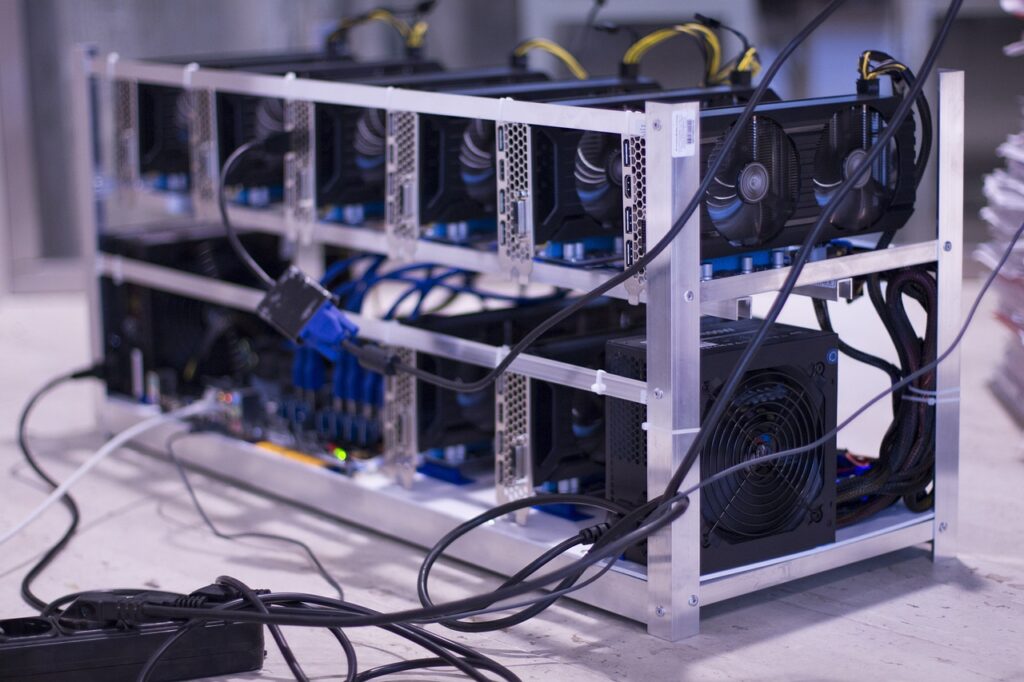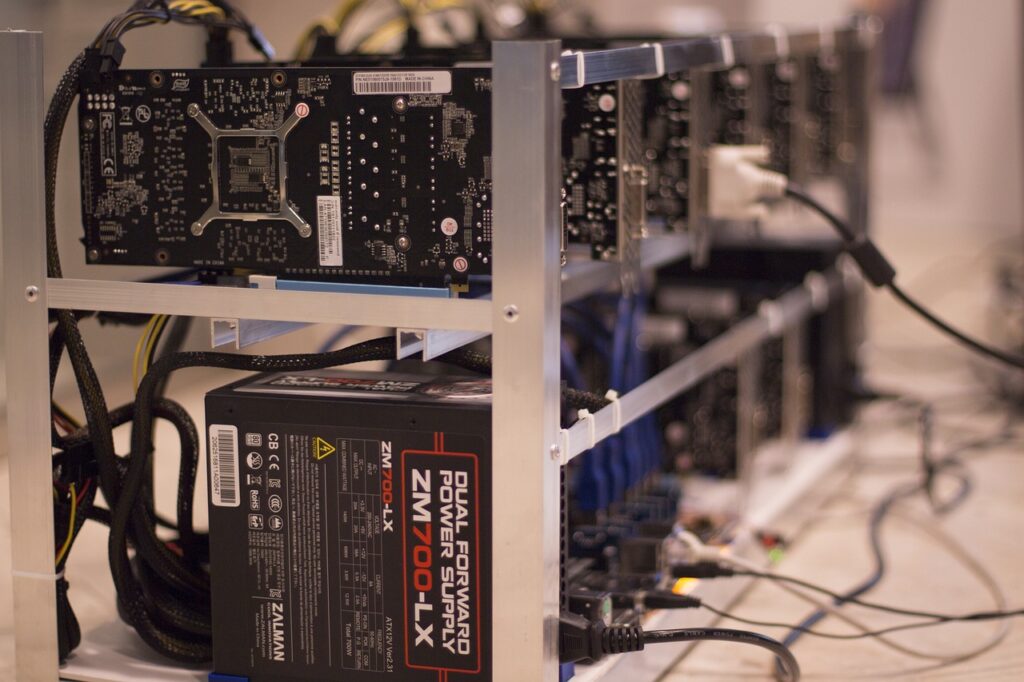What Is Crypto Mining: A Deep Dive

Cryptocurrencies have changed the financial landscape over the past decade. One of the cornerstones of the cryptocurrency ecosystem is mining. What Is Crypto Mining
While many are aware of cryptocurrencies like Bitcoin, Ethereum, and others, the mining process that makes these digital currencies work often remains a mystery to the average person. In this article, we will explore what cryptomining is, how it works, its importance, types, challenges, and future trends.
What is Crypto Mining?
Cryptomining is the process of validating and adding transactions to a blockchain, a digital ledger that records all cryptocurrency transactions. Miners use powerful computers to solve complex mathematical puzzles, which in turn confirm transactions and secure the network.
When a miner successfully solves a puzzle, they are awarded the right to add a block of transactions to the blockchain and are rewarded with cryptocurrency.
This reward serves two purposes: to encourage miners to contribute their computing power to the network and to bring new coins into circulation. With Bitcoin, for example, this reward is halved approximately every four years, a so-called “halving.”
The Importance of Crypto Mining
Transaction Validation: Mining ensures that transactions are verified and balanced, preventing problems such as double spending that arise when the same digital asset is spent more than once.
Network Security: Mining secures the blockchain network. The computing power required for mining makes it extremely difficult for malicious actors to alter transaction history or launch attacks on the network.
Decentralization: Mining allows anyone with the right hardware to participate in the maintenance of the network, further ensuring the decentralization that is a core principle of most cryptocurrencies.
Issuing New Coins: Mining is the primary method by which new cryptocurrencies are put into circulation, which is crucial to the economics of all digital currencies.
How does crypto mining work?
- Transaction transmission
When someone initiates a cryptocurrency transaction, transaction data is sent to the network. This includes information about the sender, recipient, transaction amount, and any digital signatures that confirm the authenticity of the transaction. - Transaction pooling
Miners collect transactions from the network and group them into a “block.” Each block contains many transactions that must be verified. - Solving the cryptographic puzzle
Miners compete to solve a cryptographic puzzle, a difficult mathematical problem that requires significant computing power. This process is called “Proof of Work.” The first miner to solve the puzzle gets to add the block to the blockchain. - Block addition and reward distribution
Once a miner solves the puzzle, they send their solution to the network. Other miners verify the solution, and if it is confirmed, the block is added to the blockchain. The successful miner then receives a block reward in the form of a cryptocurrency.
Types of Crypto Mining
There are different mining methods, each with their own advantages and challenges:
- Proof of Work (PoW)
This is the most widely used mining method for cryptocurrencies like Bitcoin and Litecoin. Miners must solve complex mathematical puzzles using enormous computing power. PoW is energy-intensive and raises concerns about its environmental impact.
- Proof of Stake (PoS)
Unlike PoW, miners in PoS do not have to solve puzzles. Instead, individuals validate transactions based on the number of coins they own and are willing to “stake” as collateral. This method is less resource-intensive and is used by cryptocurrencies like Ethereum (after switching from PoW to PoS), Cardano, and Tezos.
- Delegated Proof of Stake (DPoS)
DPoS is a variant of PoS where stakeholders vote for “delegates” who are responsible for validating transactions on their behalf. This approach increases efficiency and scalability, and helps accommodate a growing user base.
Crypto Mining Challenges
- Energy Consumption
One of the biggest challenges with PoW mining is the enormous energy consumption it requires. Bitcoin mining alone uses as much electricity as some small countries. This has led to an ongoing debate about the environmental impact of mining and has led to calls for more sustainable methods. - Concerns about centralization
Although mining is intended to promote decentralization, over time mining can become concentrated in regions where electricity is cheap. For example, some mining farms in countries like China (before the regulations) had disproportionate control over the Bitcoin network. This level of centralization poses risks as a small number of entities can potentially compromise network security and integrity. - Regulatory Issues
As cryptocurrencies become more popular, governments around the world are struggling to regulate mining operations. Regulations can impact miners by imposing fees, energy taxes, or even banning mining operations. The legal landscape varies significantly between countries, adding to the complexity of mining operations. - Hardware Costs
Mining requires specialized hardware known as ASICs (Application-Specific Integrated Circuits) for PoW cryptocurrencies. These machines can be expensive, making it expensive for new miners to enter the industry. Additionally, the rapid development of mining technology often means that hardware quickly becomes obsolete, requiring miners to continually invest.
The Future of Crypto Mining
The future of crypto mining offers both challenges and opportunities. Here are some trends shaping the landscape:
- Transition to Renewable Energy
With growing concerns about climate change and the environmental impact of mining, there is a notable movement towards sustainable practices. More and more miners are turning to renewable energy sources such as solar, wind, and hydroelectric power. Innovations in energy-efficient mining equipment also offer opportunities to reduce overall energy consumption. - Development of consensus mechanisms
As awareness of the challenges of PoW increases, many cryptocurrencies are moving to PoS or other more efficient consensus mechanisms. This shift can result in lower energy consumption, lower hardware costs, and faster transaction speeds. - Increased regulation
As crypto mining becomes more mainstream, you can expect more regulation around the world. Governments are likely to implement policies on energy consumption, environmental standards, and taxation of mining operations. - Growth of mining pools
Mining pools allow individual miners to combine their computing power and share rewards, increasing their chances of winning cryptocurrencies. As mining becomes more competitive, the trend toward collaborative mining is likely to increase.
Diploma
Crypto mining is a crucial part of the cryptocurrency ecosystem, allowing transactions to be validated, networks to be secured, and new coins to be introduced into circulation.

While this process faces many challenges, including energy consumption and government oversight, continued technological innovation and the shift to sustainable practices promise a changing landscape.
As cryptocurrencies continue to capture the public’s imagination, the role of mining is likely to adapt, demonstrating the resilience and dynamism of digital finance.